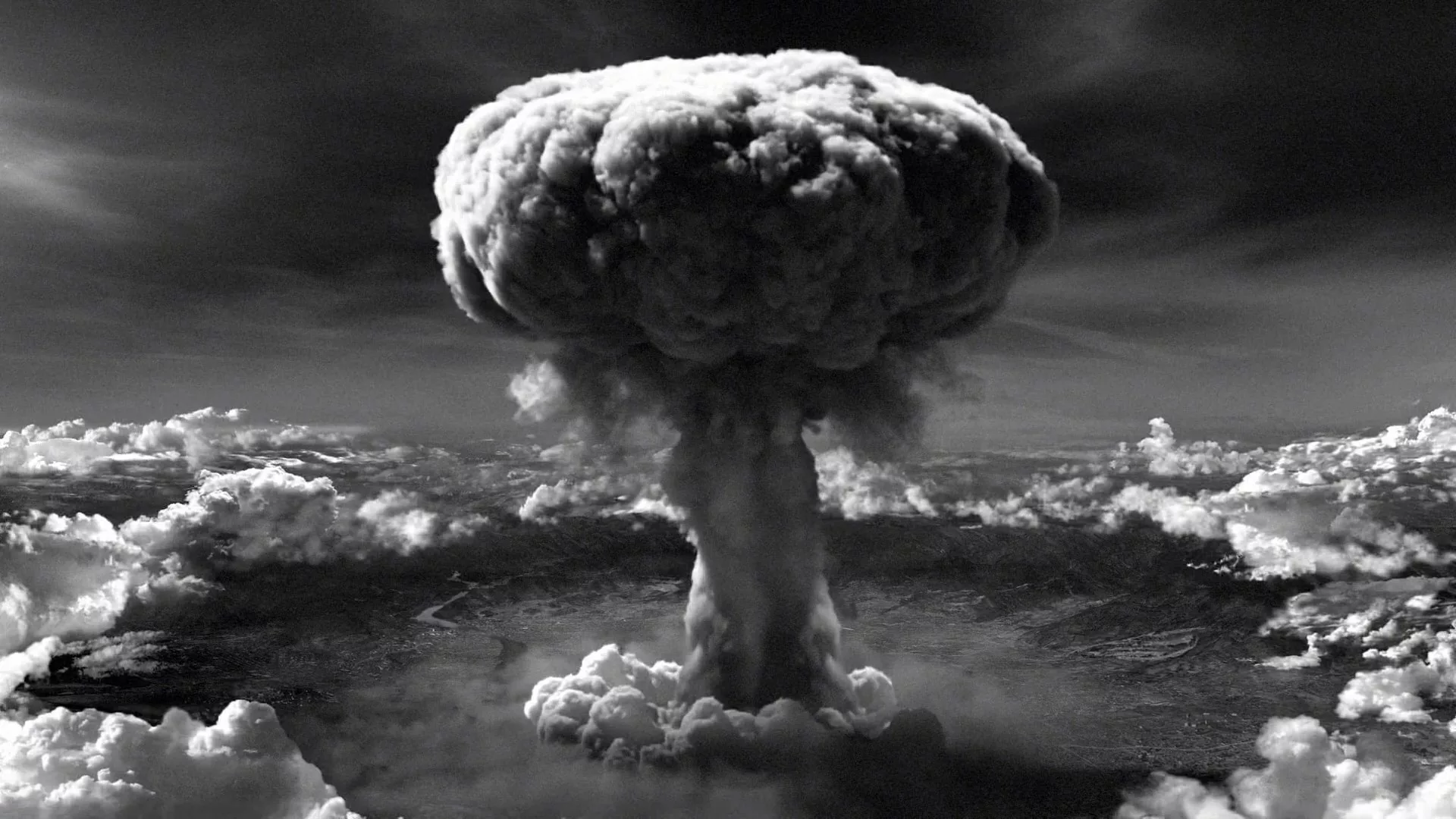It sounds like the plot of a Cold War thriller or an absurd science-fiction novel: the United States once seriously considered detonating a nuclear bomb on the Moon. Not as a test, not as a defensive measure, but as a deliberate show of force to intimidate the Soviet Union during one of the most tense eras in history.
This wasn’t just a wild idea tossed around in a backroom. It was a real military project, complete with calculations from some of the brightest scientific minds of the time, including a young Carl Sagan. It was called Project A119, and for decades it remained a closely guarded secret.
Why would the U.S. contemplate something so audacious, so destructive, and so potentially reckless? The answer lies in the intense rivalry and paranoia of the late 1950s — when the Cold War’s space race was as much about politics and propaganda as it was about science.
The Cold War Context: Space as the New Battlefield
By the mid-20th century, the United States and the Soviet Union were locked in a fierce geopolitical struggle that extended to every domain: land, sea, air — and soon, space. The launch of Sputnik 1 by the Soviets in October 1957 sent shockwaves through the U.S. government and public. The tiny beeping satellite orbiting Earth was not just a technical triumph; it was a symbolic declaration of superiority.
To many Americans, it felt like the Soviets were pulling ahead in technological and military power. The U.S. needed to respond, not just with engineering, but with a bold statement that would capture the world’s attention.
Enter the idea of nuking the Moon.
Project A119: The “Lunar Research Flights” Plan
In 1958, the U.S. Air Force commissioned a top-secret project known as A119, formally titled “A Study of Lunar Research Flights.” The goal was straightforward — and terrifying: detonate a nuclear bomb on the surface of the Moon so that the explosion would be visible from Earth.
The reasons were as much psychological as scientific. A blinding flash on the Moon’s surface would send a clear message: the United States not only had the technology to reach the Moon but also the military might to control space.
The project was directed by the Air Force Special Weapons Center at Kirtland Air Force Base in New Mexico. Leading scientists were recruited from institutions like the Illinois Institute of Technology, where a young doctoral student named Carl Sagan was brought in to study the behavior of lunar dust and atmospheric dispersion following a nuclear detonation.
Why the Moon?
The Moon offered a visible and dramatic stage. A nuclear explosion on Earth might provoke retaliation or violate existing treaties. But a detonation on the Moon, visible through telescopes worldwide, would be a spectacle of power without the risk of immediate human casualties.
The plan called for using an intercontinental ballistic missile (ICBM) to deliver a small nuclear warhead to the Moon’s surface, timed to detonate on the dark side so the flash would be maximally visible against the backdrop of space.
The Science (and Challenges) Behind the Idea
Targeting and Delivery
Hitting the Moon with precision in the 1950s was no small feat. The technology for lunar navigation was in its infancy, and there was significant uncertainty about whether an ICBM could be guided accurately enough to hit the Moon’s surface.
The Air Force proposed using a warhead similar to those in the U.S. arsenal at the time, likely a W25 nuclear bomb with an explosive yield of 1.7 kilotons — relatively small by nuclear standards but still powerful enough to create a massive flash visible from Earth.
Concerns About Fallout and Damage
Though the Moon has no atmosphere, scientists were unsure of how lunar dust and radioactive debris might behave after such an explosion. Would it create a temporary cloud that interfered with future missions? Could radioactive particles escape lunar gravity and drift toward Earth?
These questions made even some military officials nervous. Carl Sagan, though a junior scientist at the time, later revealed that part of his work on the project involved calculating how the Moon’s thin exosphere might scatter dust illuminated by the blast.
No Scientific Benefit
One of the strongest criticisms of Project A119 was that it offered no real scientific benefit. Unlike later lunar missions, which sought to learn about the Moon’s geology and origin, this plan was purely symbolic — a political stunt dressed as science.
Why It Was Canceled
By 1959, Project A119 had been thoroughly studied, and the risks began to outweigh the potential propaganda value. Several factors contributed to its cancellation:
- Public Backlash Concerns – If the plan were leaked, the global reaction to intentionally detonating a nuclear bomb on another celestial body could be disastrous for America’s image.
- Technical Risks – The chance of a failed launch or miscalculation (e.g., a nuclear device falling back to Earth) was simply too great.
- Shift to Manned Missions – With the creation of NASA in 1958, the U.S. focus shifted toward landing astronauts on the Moon, culminating in President Kennedy’s famous 1961 Apollo program speech. Planting a flag was far more inspiring than blasting a crater with a nuclear bomb.
Thus, Project A119 was quietly shelved, and its documents remained classified for decades.
The Secret Revealed
For years, almost no one outside military and scientific circles knew of Project A119. It wasn’t until the 1990s that the existence of the plan came to light, thanks to research by journalist Keay Davidson, who uncovered documents while writing a biography of Carl Sagan.
Davidson found that Sagan, in his academic writings, had indirectly referenced his work on a classified “lunar research” project — a hint that led to deeper investigation. Eventually, enough declassified material and testimony from surviving scientists confirmed the shocking truth: the U.S. had seriously considered nuking the Moon.
How Would the World Have Reacted?
Had Project A119 gone forward, it might have permanently changed the way humanity viewed the Moon. Instead of a serene symbol of beauty and exploration, the Moon might have been scarred with a crater of radioactive dust — a warning sign of human aggression etched into the night sky.
International reaction would likely have been severe. Even in the 1950s, the idea of nuclear tests in space was controversial. The Partial Test Ban Treaty of 1963 (which prohibited nuclear tests in outer space) may have been accelerated or strengthened in response.
Lessons from Project A119
The plan to nuke the Moon highlights a deeper truth about the Cold War: much of the space race was driven by fear, posturing, and the desire for dominance rather than pure scientific curiosity.
While the Apollo missions are rightly celebrated for their spirit of exploration, they were, at their core, political acts designed to demonstrate American superiority.
Project A119 is a reminder of just how far that mindset could have gone — and how close we came to turning a celestial wonder into a billboard for nuclear might.
What It Says About Power
- Symbolism Matters – The project’s entire purpose was to create a spectacle. In an era of televised news and global politics, a visible flash on the Moon was considered more valuable than any scientific discovery.
- Science vs. Politics – Even brilliant minds like Carl Sagan were enlisted for political purposes. His later advocacy for peace and planetary protection may have been influenced by his early brush with such destructive ideas.
Could Something Like This Happen Today?
Technologically, it’s far easier today to reach the Moon with precision. But legally and ethically, it would be impossible. The Outer Space Treaty of 1967 explicitly forbids placing nuclear weapons in space or using celestial bodies for military purposes.
Moreover, public opinion would be universally against it. The Moon has become a shared symbol of exploration, wonder, and international cooperation — not a canvas for destructive displays.
Conclusion: A Forgotten Cold War Folly
Project A119 stands as one of the strangest, most unsettling chapters in Cold War history. While the plan was never executed, its very existence reminds us of how easily fear and rivalry can override reason.
Instead of a mushroom cloud, humanity chose to send Neil Armstrong and Buzz Aldrin, whose gentle footprints marked the Moon in 1969. It’s a powerful contrast — one that shows how exploration, not destruction, ultimately became our defining approach to the stars.
The next time you look up at the Moon, remember this: there was once a time when someone thought blowing it up would be a good idea. Thankfully, cooler heads — and better visions for humanity’s future — prevailed.




